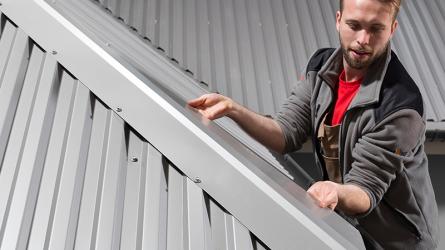Canoeing? No, thermal insulation panel rafting!
- Details
It’s easy to install, has high thermal insulating performance, and absorbs no water. But will it float? We decided to put the Thermano thermal insulation panels to the test in a way unlike any test before!
Canoeing? No, thermal insulation panel rafting!
Is PIR thermal insulation water-resistant? Extreme product testing.
It’s easy to install, has high thermal insulating performance, and absorbs no water. But will it float? We decided to put the Thermano thermal insulation panels to the test in a way unlike any test before!
Panels on a road trip
The estuary of the River Piaśnica in Dębki, Poland is a popular site for visitors from throughout the country. It is rich with fabulous views and excellent bathing spots along the Baltic shore and the river, everything for your typical R&R at the beach. The natural erosion by wind and water changes the local landscape, so that each time we visit we truly have to rediscover it. The estuary is also a favourite spot for kayakers, and there is a local harbour to facilitate their adventures.
We arrived there too, greeted by sunny weather and a nice, cool breeze. Did we come to relax? No. Jacek Łazuka, Balex Metal’s thermal insulation engineering expert, who some of you know from our video series on the subject, wanted to test one of the key features of Thermano thermal insulation panels: moisture resistance.
And the test involved no determining of μ values or donning of a lab coat. What Jacek wanted was to ride down the estuary and on to the sea using a simple raft made from... Thermano panels. Minutes before this test, Jacek had several concerns about the displacement of his unique vessel; still, he hoped to see the end of the test still dry-shod. As he mentioned to the watchful lens of the camera recording the event: “No risk, no fun!”
What makes a good ‘raft’
When choosing which thermal insulation product to use, we should look up its water absorbability and resistance. While regular thermal insulation materials normally do not see direct exposure to rain or snow, the panels are still frequently exposed to water and moisture. How does this happen? Open-diffusion and breathable materials permeate air, which also contains water vapour that then attempts to penetrate into the thermal insulation. As the ambient temperature falls, so does the thermal insulation temperature, causing condensation on the surface and inside the pores. If the condensation freezes, it poses a risk of performance failure of the whole thermal insulation system; ice reduces the thermal insulating performance by a factor of several dozen.
So, what would happen to a Thermano panel when thrown into water? Our spirits were very high right before the main part of the test: not only did the Thermano panel raft float, it did not sink under Jacek’s weight. The draft of the raft was very shallow; the panels were stable afloat, and all seemed to warrant success for this unusual maiden voyage.
What is Thermano?
Made in its most part from polyisocyanurate (the next thing to replace EPS and mineral wool), the panel core is lined on both sides with a gas-tight cladding, comprising several polymer layers and aluminium foil. Each Thermano panel has high mechanical strength, a low thermal conductivity coefficient, and resists failure when exposed to fire by forming a heat-resistant and durable scorch. These superior characteristics have been appreciated by U.S. spacecraft design engineers, who used isocyanate-modified polyurethane (PIR) as thermal insulating materials for the STS (Space Transportation System), more commonly known as the space shuttle.
It’s rafting time
After several minutes of testing the displacement, Jacek set out on his maiden voyage down the Piaśnica. The makeshift raft made of Thermano panels proved its worthiness: it neither collapsed, broke nor sunk. The Thermano panel from which the test raft was built was a standard size, of 1.2 × 2.4 m, and not modified whatsoever for the test. It arrived in Dębki as it was manufactured, straight from the warehouse. Minutes later, the maiden voyage ended when the raft safely came ashore. It was time to take it inland and inspect its condition.
First, the Thermano panel was inspected for water absorption. This feature is critical: moisture inside the thermal insulation mass can reduce the thermal insulating performance by as much as 85%. The Thermano panel which served as the raft was incised with a small blade to look for the discolouration typical of moisture or condensate penetration inside the core. Water changes the colour inside. However, the Thermano panel did not absorb any water: the PIR foam core was bright as usual between the cladding.







Your reply